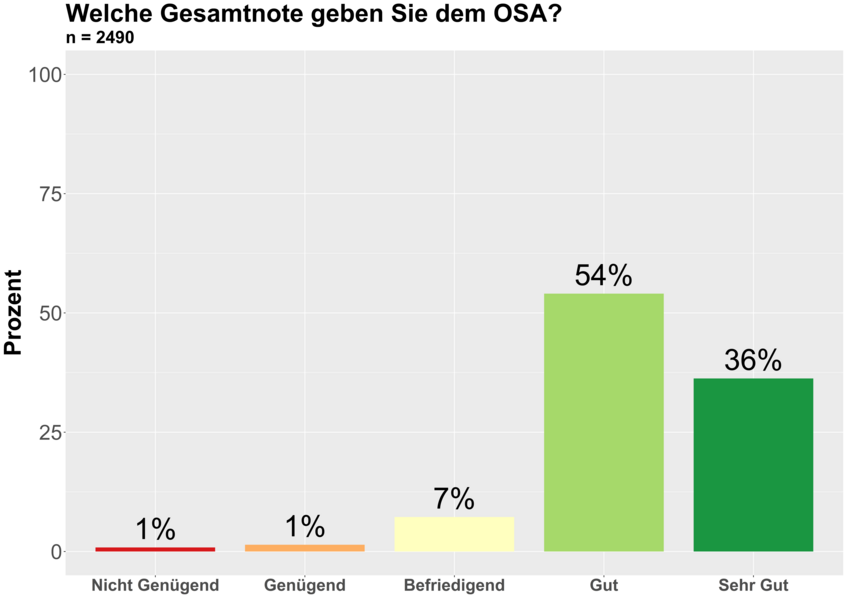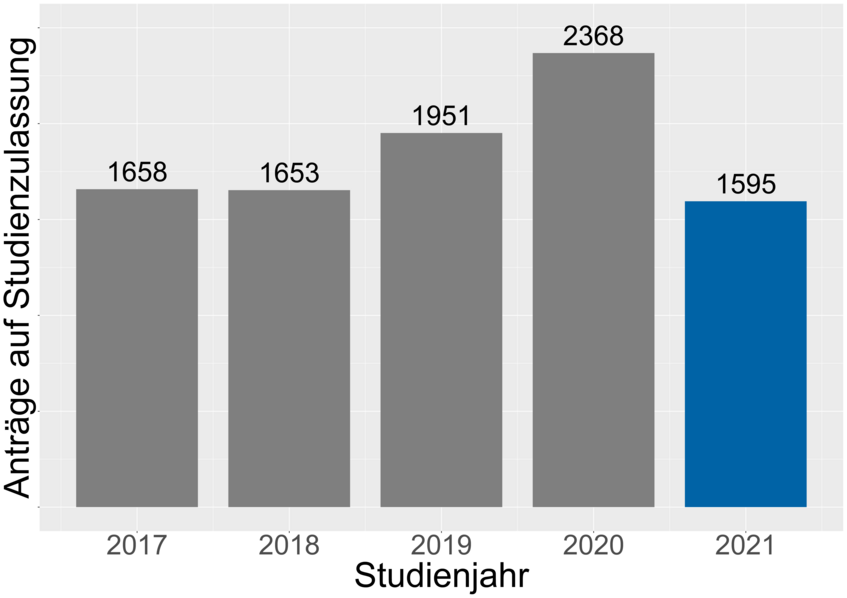Evaluation results on acceptance & quality of OSAs.
Following the implementation of an OSA, prospective students can answer a questionnaire on the quality of the OSA.
- The following results refer to the survey period 2021 (calendar year).
- In calendar year 2021, 28,310 OSA completions were recorded. 2,522 individuals (9%) completed the questionnaire1.
- The feedback suggests a high acceptance of our OSAs, which is particularly encouraging given that in many subjects OSAs must be completed as a mandatory first stage of multi-stage admission procedures.
1OSAs that had fewer than 20 responses to the questionnaire in 2021 were excluded from the analysis.




Evaluation results on the self-selection effect of OSAs
In view of rising admission numbers, OSAs were used for the first time in the 2021 academic year as a mandatory admission requirement without a downstream admission/aptitude test in eight bachelor's degree programs not previously affected by admission procedures:
- Astronomy
- Japanese Studies
- Korean Studies
- Oriental Studies
- Sinology
- Slavonic Studies
- Theater, Film and Media Studies
- Comparative Literature
This 'soft approach' relies solely on the self-selection effect of OSAs, which allows the effect on admission numbers to be directly observed in cohort comparisons:

The chart shows that after peaking in 2020, applications for admission to the eight affected bachelor's degree programs fell below 2017 and 2018 levels in the first year after mandatory OSAs were introduced (2021).
